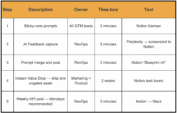The landscape of buyer engagement has undergone a seismic shift, moving decisively away from traditional browsing habits towards an era dominated by artificial intelligence. Businesses that fail to adapt their Go-to-Market strategies to this new reality risk becoming invisible, irrelevant, and ultimately, obsolete. Understanding the nuanced ways AI influences purchasing decisions is no longer an advantage, but a fundamental necessity for sustained growth.
Modern buyers are no longer passively navigating websites or filling out forms; instead, they actively consult sophisticated AI agents, engage in private peer networks, scrutinize review sites, and quickly digest search snippets. This pre-discovery phase often concludes before a company’s marketing pixel even has a chance to fire, rendering traditional click and conversion optimization efforts akin to polishing windows through which no one is looking.
Artificial intelligence has effectively collapsed the once-distinct boundaries of information discovery, delivering consolidated answers directly to the buyer. In this streamlined environment, the enterprise that consistently broadcasts the clearest, freshest, and most compelling signal will invariably secure a spot on the buyer’s shortlist, frequently before a sales representative even has the opportunity to initiate contact.
A critical challenge for many organizations lies in internal fragmentation, where various departments often define the ideal buyer differently. Such misalignment generates a noisy signal, both within the company and externally in the market. A cohesive Go-to-Market strategy must therefore prioritize aligning the entire revenue organization around a singular, AI-readable buyer narrative, ensuring consistent messaging and a unified front.
Today’s discerning buyers are not merely seeking a recognized brand; they are actively scanning for immediate recency, direct relevance, and tangible proof that others similar to them have achieved success—and critically, they demand this validation from the latest quarter, not from years past. This emphasizes the need for up-to-date case studies, testimonials, and performance data that resonate with current market conditions.
To maintain momentum and ensure strategic efforts are yielding desired outcomes, robust data-driven insights are indispensable. For instance, a proactive revenue operations team might diligently monitor key metrics, reporting vital numbers weekly and flagging any underperforming indicators with immediate alerts. This systematic approach allows for agile adjustments and prevents minor deviations from escalating into significant setbacks.
Ultimately, sustained Go-to-Market success must translate into tangible financial terms that resonate with stakeholders beyond marketing and sales. Framing GTM performance through the lens of risk mitigation, upside potential, and strategic tradeoffs, rather than simply clicks and impressions, is essential to secure necessary budget allocations and foster cross-functional support within the finance department.
By intentionally constructing a unified Go-to-Market system, organizations can effectively meet the AI-driven buyer on common ground, fostering a more direct and impactful engagement. This integration empowers businesses to streamline their outreach, personalize interactions, and ultimately, convert prospects who are already highly informed and discerning, thereby securing a competitive edge in the evolving digital marketplace.






Leave a Reply